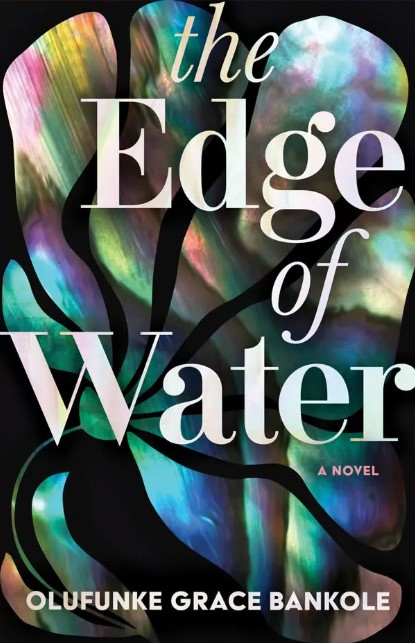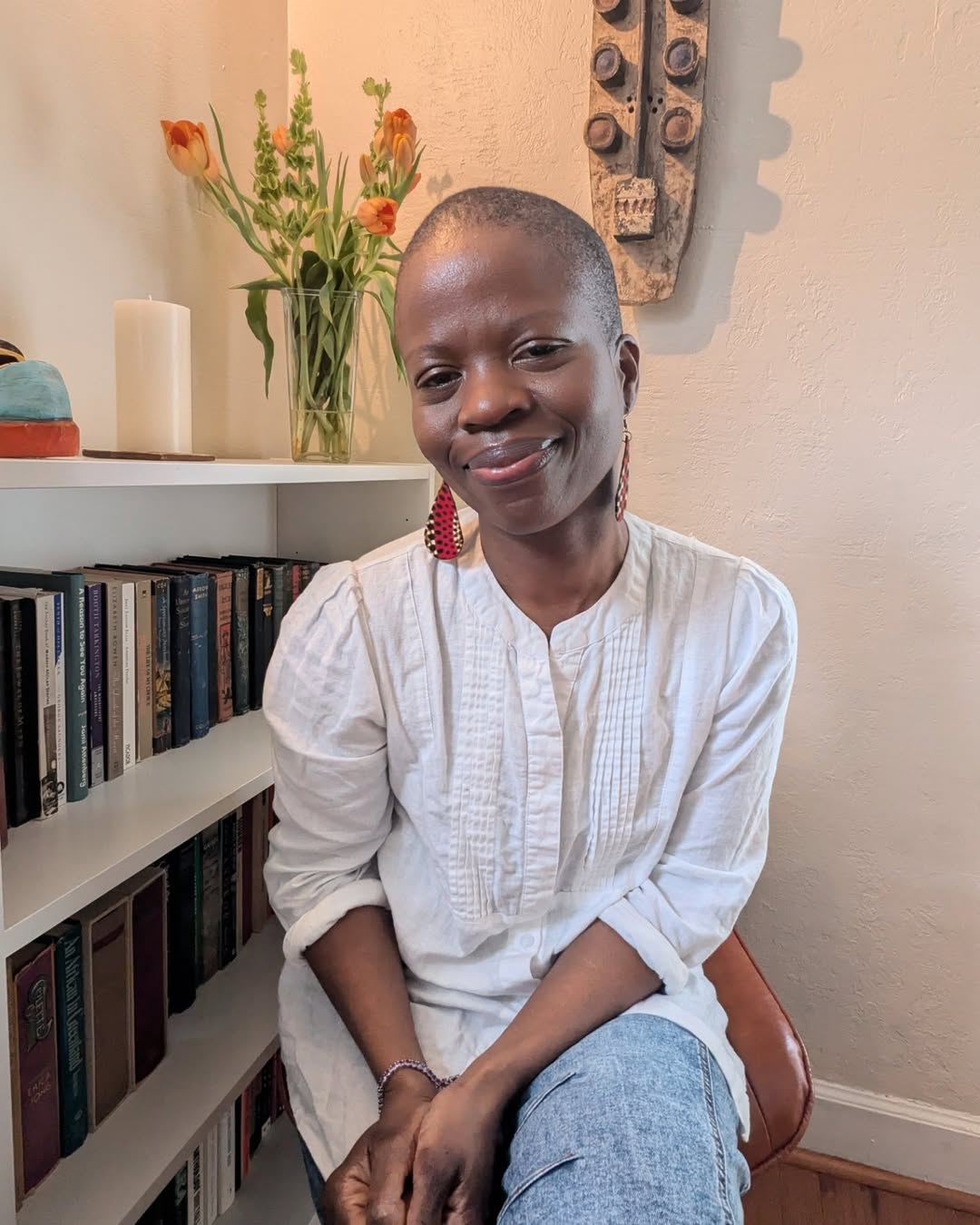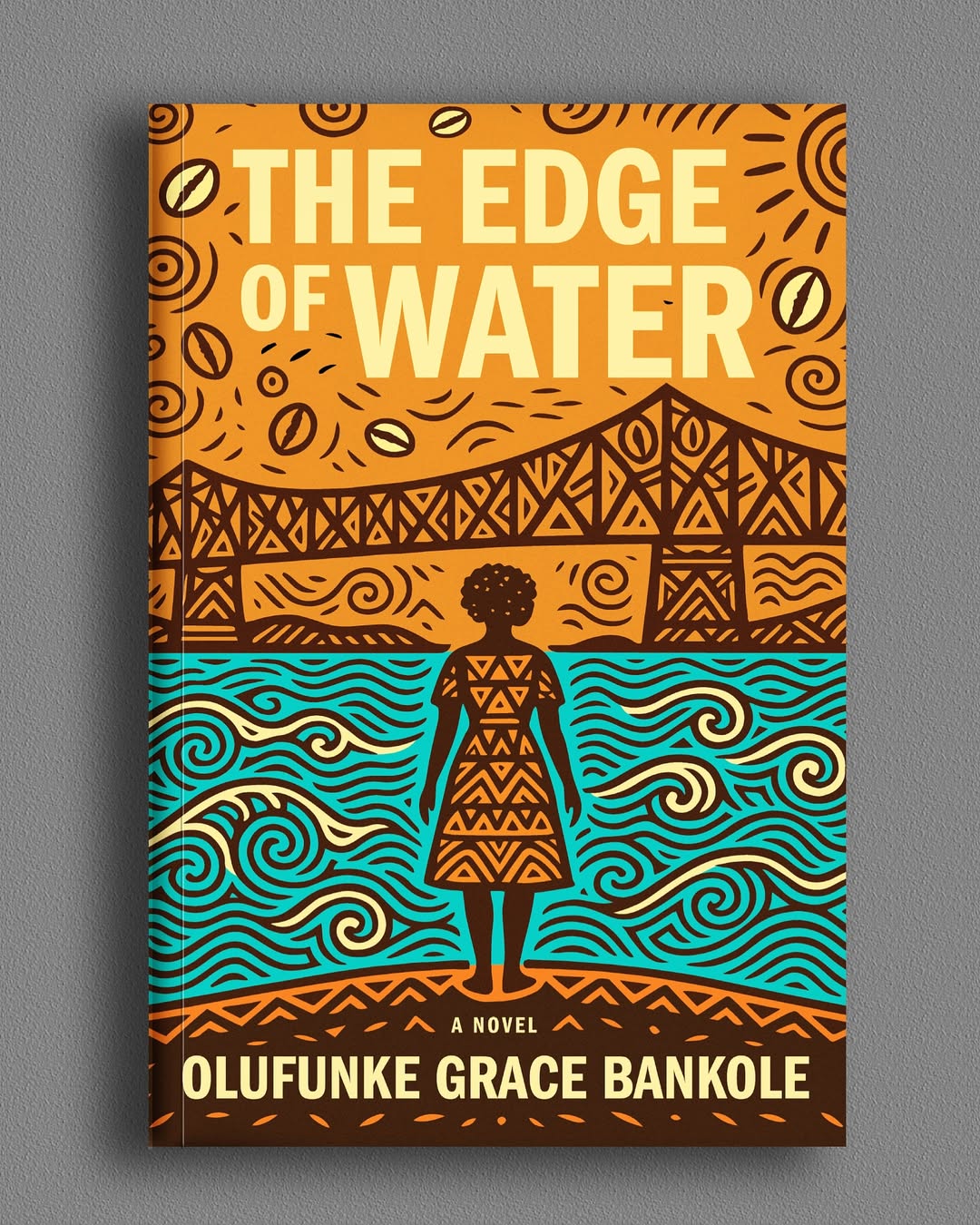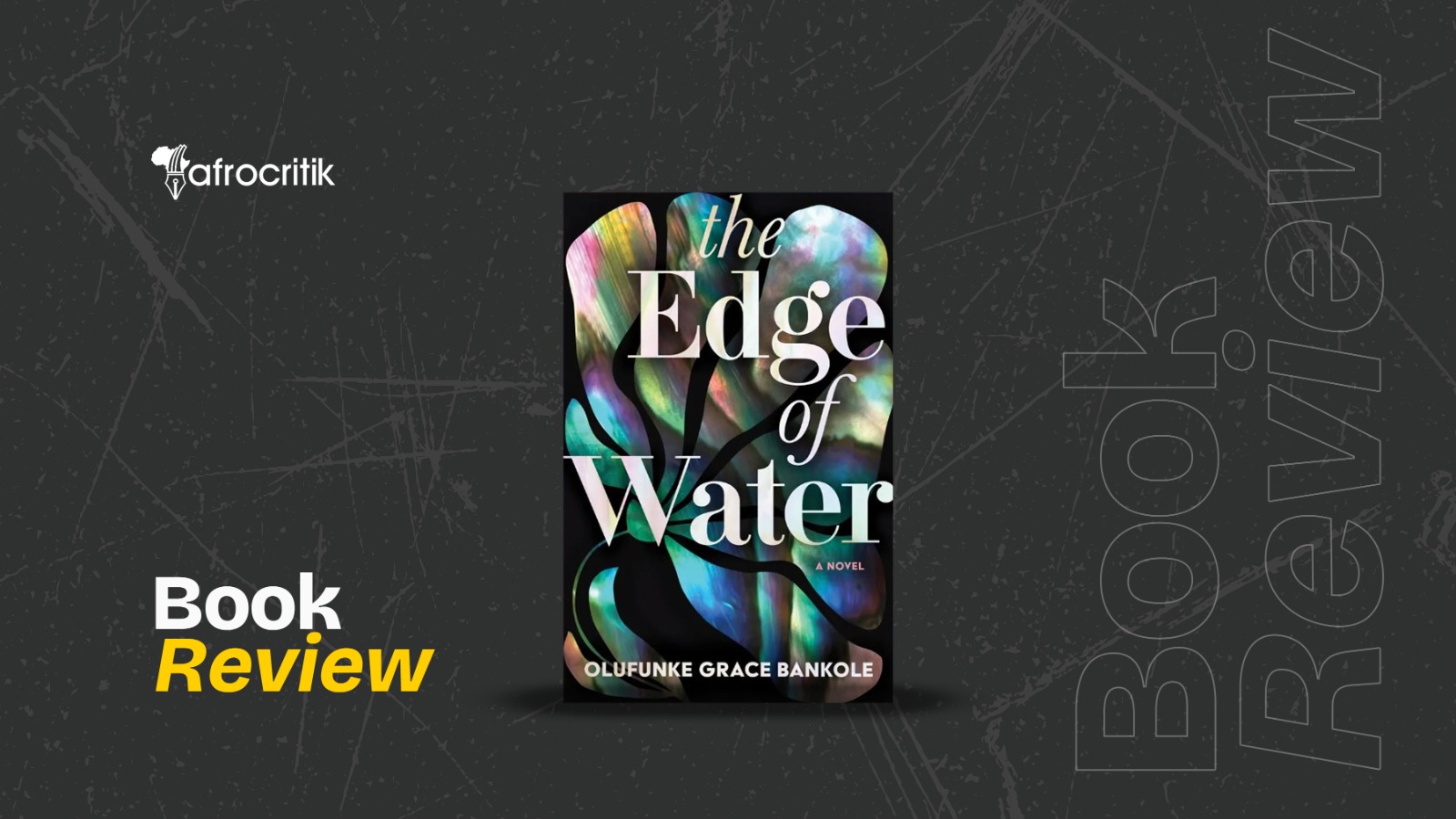The Edge of Water asks what it means for women to be bound by blood and spirit; connected across generations, yet separated by distance, and the inevitable drift of time.
By Evidence Egwuono Adjarho
“THE SHELLS TELL ME SO” are the opening words of Grace Olufunke Bankole’s The Edge of Water. The shells soon become significant, serving as powerful, predetermined forces that shape the events of the novel. Not only do they predict what happens next, but they also assume an almost omniscient presence, actively participating as the characters’ lives intertwine and evolve.
At the beginning of each chapter, the shells signal something through the forms they take: “Shells in the shape of light; Shells in the shape of dreaming; Shells in the shape of a rock”. Beyond this role, the shells establish the spiritual foundation on which the novel rests.
Bankole’s work does not merely acknowledge Yoruba spirituality as a performative nod to cultural heritage; rather, it is deeply interwoven, such that the novel cannot exist without it. Therefore, to remove the spirituality from the novel would strip it of the mystical essence that makes it both thrilling and enigmatic.
Understanding this novel requires a firm grasp of its title. ‘Edge of Water’ carries multiple meanings, all centred on the idea of meeting points—between worlds and between states of being. This concept forms the very essence of the novel, illustrating how generations of women remain interconnected even while leading distinctly separate lives.

The Edge of Water is a story about matrilineal ties. It is a deep exploration of the bonds between mothers and daughters across generations, how these relationships are represented, and why they matter. Esther marks the beginning of this matrilineage in the novel. We are introduced to her not directly, but through retrospection, as she recounts her life to her daughter, Amina, in a series of letters. Through these letters, Esther communicates her past and how it shaped her, attempting to reconnect with her estranged daughter.
She begins by confessing that Sani, Amina’s father, was never her true love; that place belonged to Joseph, to whom she never had the chance to confess her feelings. Esther then recounts the events that led to her marriage—a union born out of tragedy, as she became pregnant following Sani’s sexual assault.
Amina, too, shares her story, though it is initially unclear whether her narration is directed to anyone in particular, especially her mother, until much later in the novel. Her account blends what she was told as a child about her origins with her own lived experiences. Together, the voices of mother and daughter reveal the layers of their lives and the different ways they navigate love, pain, and inheritance.
Esther’s decision to move out of Sani’s house with Amina as the novel progresses marks the climax of the novel. She leaves in search of a better life for her daughter, determined to rewrite their story. After opening a restaurant named ‘Esther’s Palace’, she watches her dream slowly take shape.
Yet, she remains haunted by fears and uncertainties about Amina’s future. Perhaps as a result of her own trauma, Esther begins to project her misfortunes onto her daughter, attempting to shield her from a fate similar to hers. In one of her letters to Amina, she writes, “I wanted you to be like me, yet walk a separate path”.
Driven by desperation, Esther first turns to the church, where a dubious prophet—described as “the traveling prophet”—declares that Amina is “husbandless,” claiming this to be the root of her problems. Still seeking answers after the prophecy of Amina getting married same year proved untrue, Esther later visits an Iyanifa, a Yoruba priestess, who reveals a truth that Esther chooses to lock away from both Amina and readers until it ultimately manifests.
Amina, the recipient of her mother’s letters, interprets Esther’s desire for control over her life as overbearing. This fuels a deep yearning for freedom, which ultimately leads to her migration to America. Before this, however, Amina also tells her own story.

Told in a bildungsroman style, Amina’s story follows her from childhood, where she is misjudged and stereotyped, especially accused of witchcraft by her father’s third wife, through her teenage years when her relationship with her mother begins to fracture. The breaking point comes after she discovers that both she and her mother had intimate relationships with the same man, Niyi.
Later, after winning the American visa lottery, Amina turns to her father, Sani, for financial help. But instead of offering genuine support, he steals the money he gives her. This betrayal prompts Amina to sever ties with him completely. Her decision to move abroad is further driven by jealousy toward her stepsister, Oyin, whose life seems more stable and privileged. Yet once in America, Amina quickly learns that the country does not live up to her grand expectations.
Grace Olufunke Bankole’s The Edge of Water is divided into four parts: A Line of Dreaming Women, Iyanifa: Mother of Mysteries, The Storm, and After the Storm. Each section dissolves the boundaries of time, moving fluidly between past, present, and future. These temporal crossings are never defined; rather, they blur into one another, evoking the very liminality upon which the novel rests.
The Edge of Water most powerful articulation of this liminality, however, lies in its women. Early on, Iyanifa, the seer and spiritual guide, voices this cyclical fluidity: “Through rounds of life and death, they wait for one another to return to where everything begins again and again”. From that moment, the reader is drawn into the interwoven lives of Esther, Amina, Oyin, Laila, and Iyanifa—women separated by time and circumstance yet inextricably bound by a shared lineage.
Bankole positions these women as both subjects and vessels of continuity, transforming The Edge of Water into a meditation on matrilineal inheritance: on how womanhood is moulded, remembered, and reimagined across generations. This inheritance is explored through the choices the women make, particularly Esther’s. Following her rape, she is coerced into marrying Sani to avoid “the reputation of having slept around before marriage”.
What begins as a forced union becomes the seed of her transformation: motherhood births in her a defiant dream to create for Amina the life she was denied. Her escape from Sani’s house, first to Elekuro Street and later to the tellingly named There But for the Grace of God Go I Avenue, becomes an act of survival and resistance. Yet, in daring to choose freedom over conformity, Esther becomes the subject of societal ridicule and is named the “nonentity food-seller woman”.
The thread binding these women extends across oceans and reincarnations. Iyanifa’s introduction of Laila, a woman returning from the United States in search of her ancestral roots, deepens the novel’s sense of cyclical time. At first presented only in fragments, Laila’s identity later crystallises, revealing her kinship to the other women and reinforcing the motif of return, of life folding back into itself like waves meeting at the water’s edge.
Iyanifa herself serves as the novel’s omniscient anchor. Through her reading of the shells, she interprets the unfolding of lives with an oracular restraint that preserves the story’s mystery. Her presence blurs the line between the spiritual and the earthly, the living and the ancestral.

Equally compelling is Bankole’s use of the gossiping chorus, which are anonymous, unrelenting voices in The Edge of Water. They represent the collective conscience of society, harsh and hypocritical, passing judgment on Esther’s choices with voyeuristic delight. “They would let you tell your story again, nodding and flinching as if it was all new. And in some way it was, because for that moment, they let themselves enjoy your calamities afresh.”
When Esther acquires a car, they sneer, “Who has she slept with to get this car?” Through this chorus, Bankole exposes the insidious ways in which women’s autonomy is policed by communal scrutiny.
The Edge of Water resists simplicity. Its themes and non-linear structure demand patience, its sentences—sometimes long, winding, and sensuous—mirror the ebb and flow of the story’s spiritual undercurrents. Yet, it is in these sentences that the novel’s power resides. One in particular encapsulates the emotional intensity of Grace Olufunke Bankole’s prose: “And finally: shame. It crawled from my stomach and choked my chest like the bitter rise of unsettled food.”
A meditation on womanhood, inheritance, and the porous borders between the living and the ancestral, The Edge of Water asks what it means for women to be bound by blood and spirit; connected across generations, yet separated by distance, and the inevitable drift of time.
Evidence Egwuono Adjarho is a dynamic and evolving creative with a flair for literature and the arts. She finds joy in reading and writing, and often spends her free time observing the world around her. Her interests span a wide range of artistic expressions, with a particular focus on storytelling in its many forms including photography.




